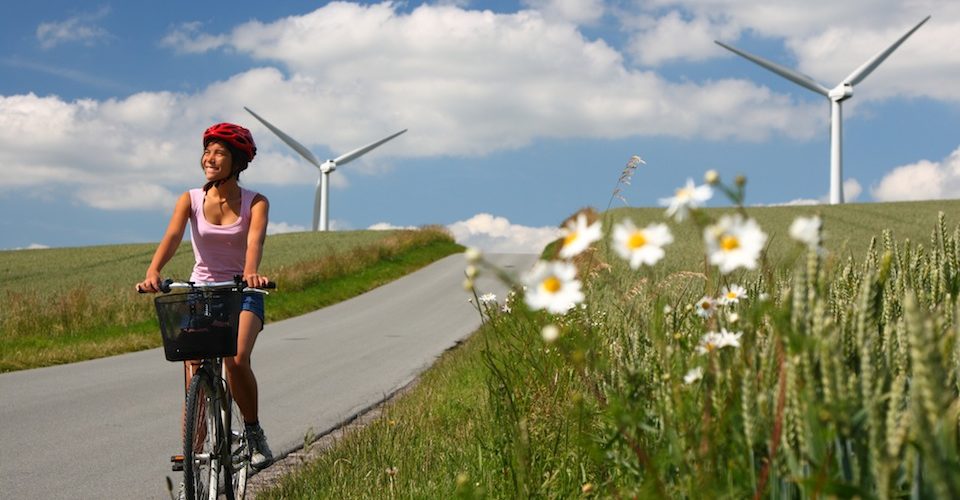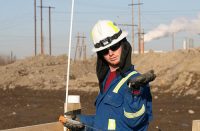A recent survey in countries around the world found that people who live in Denmark are the happiest, followed closely by Norway. Canada didn’t fare badly, ranking sixth. One reason that Danes and Canadians are happy is obvious: both nations are rich democracies and both offer some protection against illness and abject poverty (Denmark more comprehensively so than Canada). Rich alone does not do it for happiness; the US is far from the top of the happiness list.
A recent survey in countries around the world found that people who live in Denmark are the happiest, followed closely by Norway. Canada didn’t fare badly, ranking sixth. One reason that Danes and Canadians are happy is obvious: both nations are rich democracies and both offer some protection against illness and abject poverty (Denmark more comprehensively so than Canada). Rich alone does not do it for happiness; the US is far from the top of the happiness list.
The differences between Canada and Denmark are, however, striking – especially when it comes to environmental and energy policies and practices.
The most visible difference is transportation. This is partly a generic Europe versus North America thing: European public transportation is vastly superior. European systems are seamlessly integrated. In Copenhagen (as in many European cities and now a few North American ones) trains to downtown come right into the airport terminal. In Toronto of course there is as yet no airport train. But many more differences. Danish trains go almost everywhere and are synchronized with buses. You can buy one ticket for your whole trip and walking maps from train doors to bus stops are online, including the times the short walks will take. The buses leave just a few minutes after the slowest walker arrives (at exactly the scheduled time). Additionally, the city is currently upgrading and expanding an already excellent subway system.
More dazzling are the bicycles everywhere. My guess is that there are more cyclists in Copenhagen than cars. A high proportion of downtown streets are walking streets (with only emergency, delivery and repair vehicle access). Bicycles are separated from walkers and from cars. Cyclists obey their own streetlights. Another very striking difference: separate bicycle routes extend across the entire county, parallel to intra-city roads. The countryside bicycle routes are heavily used in good weather and are used year round.
Just to give a sense of how different things are: of the five Danes I got to know well during my visit, three did not own cars. All could likely afford them and two who chose not to lived in small rural settlements. One had a small scooter and a bike; the other two preferred bikes and public transportation. One is in her 70s – her mother had ridden her bike daily until she turned 97 and moved into a nursing home.
The greening of food is also environmentally a bit ahead of us. One Copenhagen restaurant we frequented, BioMio, boasted a 100 per cent organic menu (and great variety). Organic foods (including fresh, tinned and frozen goods of every kind, cheese, meat, wine, beer and even schnapps) are widely available even in remote locations.
Perhaps the biggest difference, however, is energy production and use. Energy efficiency is the norm, aided by fairly mild winters and not-too-hot summers – and by the quality transportation system of course. Danes use about half the energy Canadians use (per person or per dollar of GNP). In many hotels you cannot put on the lights unless you insert your room key card inside the door. When you remove your key to go out the lights go out – you cannot leave one on. Many buildings are daylighted (with skylights frequently now added to older buildings). Appliances are superefficient – the Danish government pioneered appliance efficiency standards decades ago.
Renewable energy is booming. Denmark hit its solar electricity objectives eight years ahead of schedule. Windmills dot the landscape, usually in pods of three to five – with a few large arrays offshore. I heard of no one who objected to this (and I was not with environmental activists). I asked everyone I met if they heard objections to wind turbines. No one had in years. Danes are proud of their national approach to energy and climate change. The European Union has located its energy offices in Copenhagen and the Danish wind turbine producer, Vestas, is a world leader. Siemens operates there as well in a big way. Indeed, nearly half of all of the world’s windmills are produced by firms based in Denmark.
I spent a week on Samsø Island, a centre for Danish energy innovation. Samsø is an agriculturally based island of about 50,000 people mostly in small villages. Wind turbines supply 100 per cent of the island’s electricity. There are eleven large units owned by the Samsø community as a whole and ten additional large offshore turbines export electricity to the mainland, in effect offsetting fuel for cars and the three large ferries. Seventy per cent of heating also comes from renewables, mostly electricity, wood and agricultural waste. I spoke with a farmer who was experimenting with crop-based biofuels for his tractor and was installing solar panels on his large outbuilding as money was available. This island community is a model for the nation and home to the Samsø Energy Academy, a world leader in renewable energy research.
From 1988 to 2005 Denmark cut carbon emissions by 22 per cent, mostly by phasing out coal-fired electricity in favour of renewables, while Canada’s carbon emissions soared. There is no reason we could not now follow the path Danes have pioneered. Living in a globally responsible nation again might make at least some of us Canadians happier too.
Robert Paehlke is a professor emeritus at Trent University where he taught environmental policy and politics for 35 years. About 40 years ago, he envisioned a magazine that was both scientifically sound and journalistically interesting, and Alternatives was born. “Bob P,” as we call him, sits on the magazine’s editorial board and he contributes articles and blog posts as often as we can trick him into it.
He is the author of Environmentalism and the Future of Progressive Politics (1989), Democracy’s Dilemma: Environment, Social Equity and the Global Economy (2004), Some Like It Cold: The Politics of Climate Change in Canada (2008) and Hegemony and Global Citizenship (2014).













